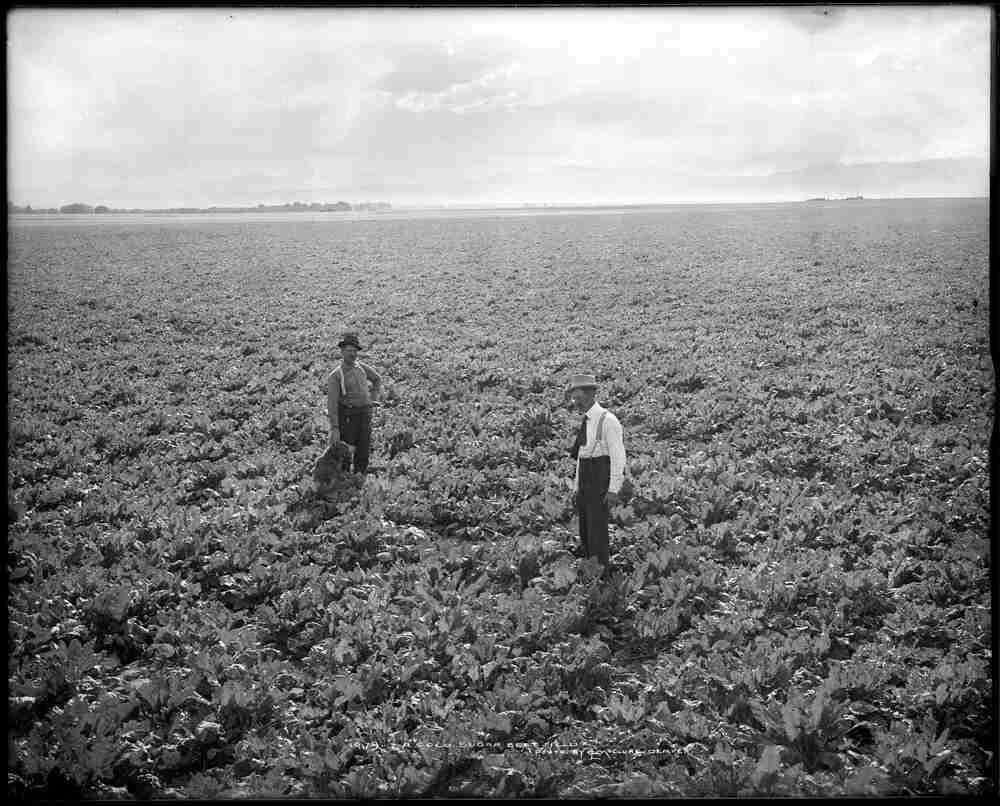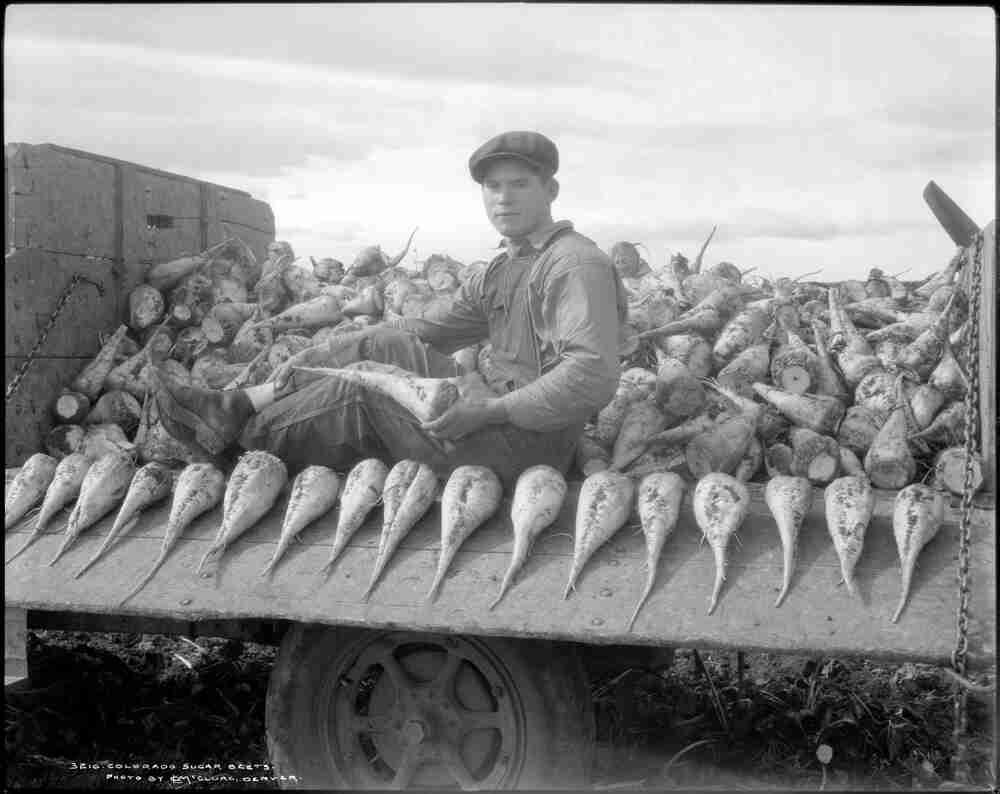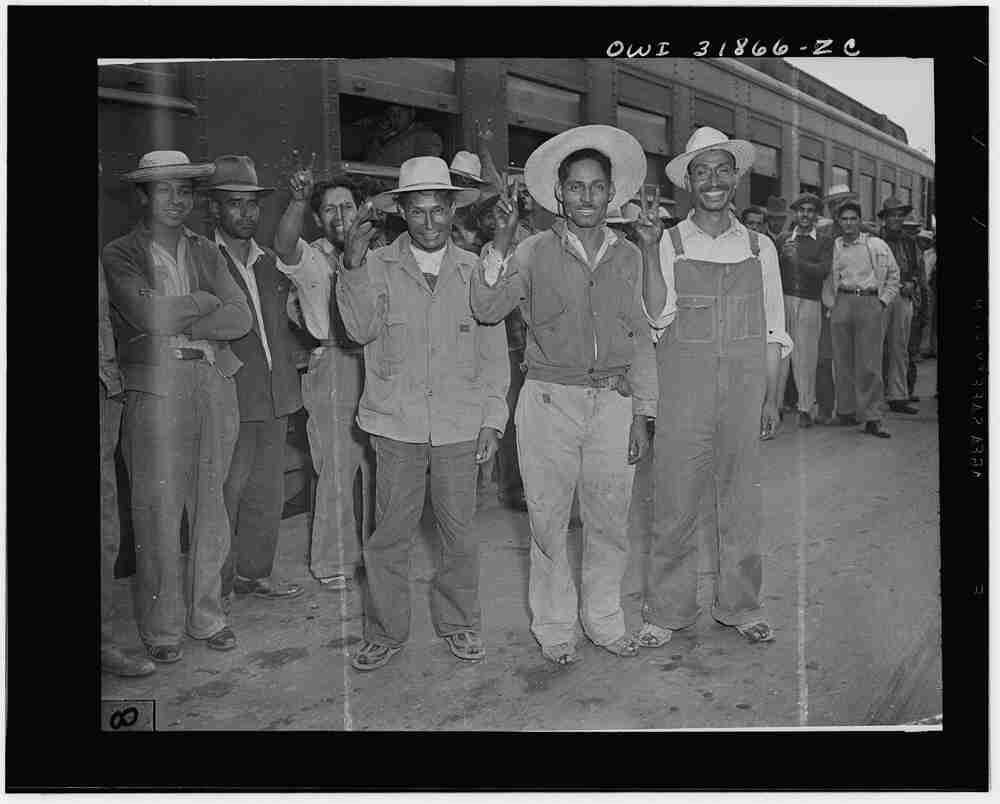Sugar Beet Industry
Full Article
Today sugar beet production is a small part of Colorado’s economy, but in the twentieth century it was the most important agricultural activity in the state. Of more than twenty sugar-refining factories, most built between 1899 and 1920, only the Fort Morgan factory remains in operation. In recent years, the US Environmental Protection Agency has provided financial assistance to former “sugar towns” to clean up deserted factory grounds contaminated with asbestos and decades’ worth of lime waste. The sugar beet industry’s importance to Colorado history extends beyond these ruins.
Beginnings
Industry historians often note that at the turn of the twentieth century, the dramatic growth of sugar beet production proved that white immigrants living in Colorado could make the desert bloom. The sugar beet industry also diversified an economy reliant on mining and ranching, as rural Colorado towns came to produce millions of pounds of white granulated sugar. In addition, the industry’s dependence on seasonal migrant workers set a precedent for the production of labor-intensive crops in Colorado.
At the close of the nineteenth century, newly constructed sugar factories across the American West began to produce white refined sugar from sugar beets grown in local fields. The 1898 Spanish-American War further spurred the industry’s expansion, when many American sugar refiners and consumers tried to push Caribbean-produced sugar out of US markets. Fostered by local and federal support, Colorado became a leading sugar-producing state. However, this agricultural transformation was at the expense of Native American land rights.
The treaties with Plains Indians that followed the 1864 Sand Creek Massacre greatly reduced Native American landholdings in Colorado. These treaties removed the Cheyenne, Arapaho, Apache, Comanche, and Kiowa nations from Colorado, eventually resettling them on smaller reservations in Indian Territory, now Oklahoma. The United States unilaterally ratified the 1867 Medicine Lodge Treaty without the consent of the groups listed above. This opened the Platte and Arkansas River valleys to white immigrants, who believed that American capital, European technology, and commercial farming would civilize Colorado. By 1882 Ute Indian removal opened the Grand Valley to agricultural settlers. In the last decades of the nineteenth century, Denver’s Chamber of Commerce, the Agricultural College of Colorado (now Colorado State University), and rural elites such as Rocky Ford’s George W. Swink worked to get the attention of land and water companies. These companies sold cheap mortgages and water rights to potential farmer-settlers and to beet sugar companies hoping to establish a German-origin industry in the American West. They succeeded in convincing East Coast capitalists that Colorado had friendly politicians, farmer interest, and fertile river lands and that regional nonwhite workers would come for spring planting and leave with the harvest.
The sugar beet industry expanded rapidly in Colorado. American sugar companies helped German and French sugar beet experts immigrate to the United States and imported seeds and factory machinery across the Atlantic. In 1899, Charles Boettcher, a German immigrant who made a fortune as a hardware merchant in Colorado’s mining boom, financed the state’s first sugar factory in Grand Junction. Within a decade, his Great Western Sugar Company opened ten factories in the South Platte River valley with support from Henry Havemeyer of the New York Sugar Trust. By 1910 Holly Sugar, the American Beet Sugar Company, and the National Sugar Manufacturing Company had expanded in the Arkansas River valley. Yet Colorado sugar towns needed more than European expertise and technologies to get off the ground; they also needed workers.
The Work of Making Sugar
Sugar beet cultivation required careful work that could only be done by hand. Since many of Colorado’s new white American landowners viewed field labor as below their class and race, industry founders faced the challenge of finding an adequate labor force. The industry’s labor needs embroiled Colorado in a global debate between workers seeking to make a living and capitalists seeking cheap workers.
In the wake of slavery’s abolishment in the nineteenth century throughout the Americas, cane sugar producers experimented with various labor systems. In Louisiana, sugar cane plantation owners replaced enslaved African Americans with Chinese contract workers. However, the United States banned Chinese workers in 1882 and outlawed contract labor in 1885. Sugar beet growers found it difficult to recruit field laborers at the wages they wanted to pay. Henry Oxnard, the president of the American Beet Sugar Company, solved his company’s labor needs in California and Nebraska by substituting Native American and Mexican workers for Chinese and white workers, a practice replicated in Colorado. Sugar beet growers to the east and west of the Continental Divide employed Native American workers from regional Indian schools and reservations. Companies also recruited workers from Hispano communities in southern Colorado and northern New Mexico. Native American and Hispano workers took sugar beet work in order to survive the changes that American colonization brought to their lives after the end of the Mexican-American War in 1848 and during the ensuing Indian Wars.
Colorado sugar companies also recruited diverse fieldworkers from communities marginalized in white American towns and labor markets. Over the course of the twentieth century, the list of preferred fieldworkers included Hispano, Native American, German Russian, Japanese, Tejano, Mexican, Filipino, and South Asian. These workers were often noncitizens, recent immigrants or refugees, and nonwhite. From its first years, the industry also employed incarcerated workers. Teenagers in trouble with the law, Japanese Americans imprisoned at the Granada Internment Camp during World War II, and German and Italian prisoners of war all labored in Colorado beet fields.
Seasonally, sugar beet factories employed 100 to 200 workers, typically white American men, who in the 1930s and 1940s unionized and gained some bargaining power. However, each harvest required thousands of nonunionized fieldworkers. These individuals are often left out of Colorado histories, yet they contributed the bulk of human energy needed to convert beets into sugar. Without their labor, the sugar beet industry and other labor-intensive agricultural industries in Colorado would not have prospered.












